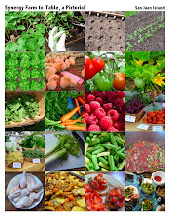Excerpted from A Homemade Life by Molly Wizenberg, including author's tips.
This recipe calls for a fairly small cabbage. I like to use small ones because they're often sweeter and more tender than their big-headed siblings. If, however, you can only find a larger cabbage, you can certainly use it. Just be sure to only use as many wedges as fit into a single layer in the pan, and take care that each wedge is no thicker than 2 inches at its outer wedge. Otherwise, the cabbage won't cook properly.
You can also try this method on halved or quartered Brussels sprouts.
1 small green cabbage (about 1 1/2 pounds)
3 tablespoons (1 1/2 ounces) unsalted butter
1/4 teaspoon salt, plus more to taste
2/3 cup heavy cream
1 tablespoon fresh lemon juice
First, prepare the cabbage. Pull away any bruised leaves, and trim its root end to remove any dirt. Cut the cabbage into quarters, and then cut each quarter in half lengthwise, taking care to keep a little bit of the core in each wedge. (The core will help to hold the wedge intact, so that it doesn't fall apart in the pan.) You should wind up with 8 wedges of equal size.
In a large (12-inch) skillet, melt the butter over medium-high heat. Add the cabbage wedges, arranging them in a single crowded layer with one of the cut sides down. Allow them to cook, undisturbed, until the downward facing side is nicely browned, 5 to 8 minutes. I like mine to get some good color here, so that they have a sweetly caramelized flavor. Then, using a pair tongs, gently turn the wedges onto their other cut side. When the second side has browned, sprinkle the salt over the wedges, and add the cream. Cover the pan with a tight-fitting lid, and reduce the heat so that the liquid stays at a slow, gentle simmer. Cook for 20 minutes, then remove the lid and gently, using tongs, flip the wedges. Cook another 20 minutes, or until the cabbage is very tender and yields easily when pierced with a thin, sharp knife. Add the lemon juice, and shake the pan to distribute it evenly.
Simmer, uncovered, for a few more minutes more to thicken the cream to a glaze that loosely coats the cabbage. Serve immediately, with additional salt at the table.
Variation:
- Not wanting the indulgent richness of the cream as a side dish to accompany a summer dinner of lemon roasted chicken with rhubarb onion sauce, I followed this same cabbage recipe, but used an IPA beer instead of cream. It turned out delish and still a little creamy thanks to the butter.












